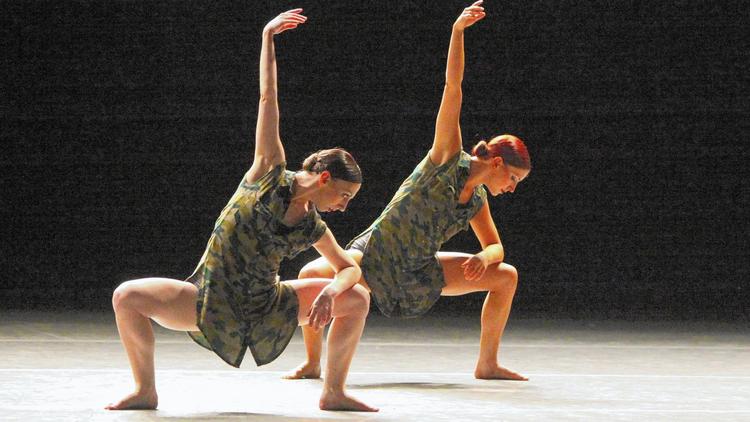

Giordano Dance honors all that jazz, past and present
Laura Molzahn on June 12, 2016
It’s not easy to pack the Auditorium, even if you don’t count the balconies. But Giordano Dance Chicago did that Saturday, in a one-night performance that concluded this season’s Made in Chicago series. An enthusiastic crowd went wild for every one of the program’s five dances, spanning 33 years of history for the troupe Gus and Peg Giordano founded more than a half-century ago, now directed by their daughter Nan.
The Giordano company’s mission is to preserve and promote the art of jazz dance — a big house with a lot of rooms, some built nearly a century ago. This program peered into a good number of them, foregrounding not only the dancers’ famed technique but their versatility as they channeled the bump ‘n’ grind of Bob Fosse, the ball-bearing smoothness of Alvin Ailey, and what now seems the prim and proper jazz dance of the 1930s.
Retro may be the company’s raison d’etre, but it’s definitely been jazzed by recent forays into more contemporary music and dance, like Brock Clawson’s “Sneaky Pete,” choreographed last spring. In this gracious parody of film noir, the title character, sunk low to the ground, tucks his nose into the crook of his raised elbow to avoid detection. Right. A tongue-in-cheek aura of melodrama gives “Sneaky Pete” a comic tinge but doesn’t undercut its ghostly story of a woman who spies upon the spy — and unmasks him, much to his anguish, which is just overdone enough.
But what shines in “Sneaky Pete,” especially in this program’s context of impactful but monolithic movement, is its choreographic complexity. In a clever shell game, Clawson plays with solos, duets, trios; canon movement for the 11 dancers’ small groups; varied heights, from the floor to soaring lifts. Balletic without being married to the form, “Sneaky Pete” sneaks into the heart.
The other more contemporary work — Ronen Koresh’s “Crossing/Lines,” which debuted last fall — challenged the dancers to lose control in movement defined by released hips and torsos, near loss of balance, abandon. Folk dance and folk-tinged music guide Koresh’s grounded choreography and give it energy, and the work’s mix of anxiety and humor, of hostility and community, is intriguing. But the repetitive vocabulary and overreliance on unison get old long before the dance ends.
A fresh presentation of Randy Duncan’s “Can’t Take This Away” firmly grounded retro in the eternal. This is a work clearly about death, first presented in 1996 as the finale of the AIDS benefit Dance for Life. It’s also celebratory — and never more forcefully than here, with the addition of nine onstage gospel singers, Chicago’s Bourne Family. The power and passion of their two introductory hymns, and later their singing along with the usual recorded score, positively galvanized audience and dancers alike, especially when Ailey-inflected gravity turned to Ailey-inflected joy. When the 15 dancers bounded offstage and into the aisles, and the singers came to the lip of the stage, the theater caught fire.
Ray Leeper’s 2014 “Feelin’ Good Sweet” did not come across as well as it did on first viewing. Though burlesque-style Broadway jazz is definitely in Giordano’s wheelhouse, this work’s overt come-ons seemed a little tired, a bit too retro.
Gus Giordano’s 1983 “Sing, Sing, Sing,” set to an instrumental recording of Louis Prima’s song, is truly retro. Reminiscent of Lou Conte’s 1978 “The 40s” for Hubbard Street, this work recently restaged for 10 looks unfortunately fussy, cute, mechanical. Though you have to respect the way Giordano Dance honors the past, all that jazz isn’t always all that.
